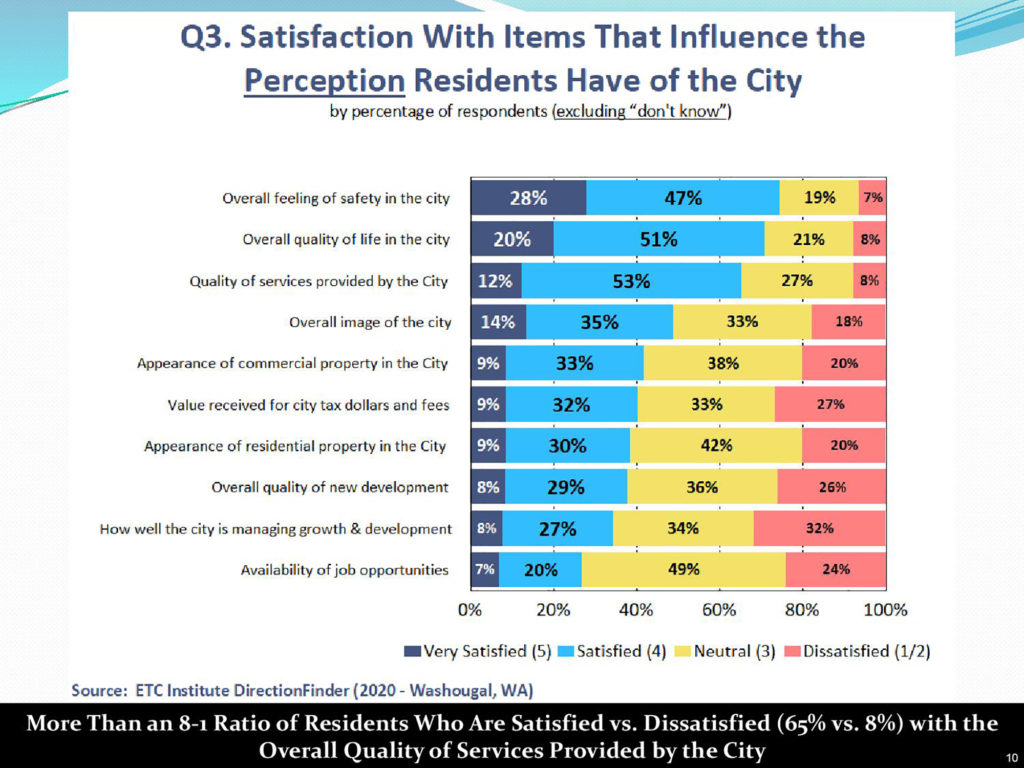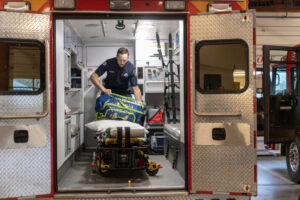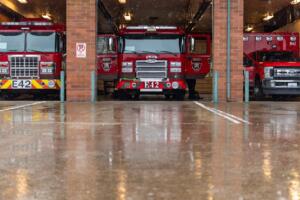Washougal residents have a positive overall perception of their city but would like to see improved street maintenance and economic development efforts, according to the results of a community survey.
Chris Tatham, chief executive officer of the ETC Institute, an Olathe, Kansas-based consulting firm, told city leaders during a May 15 virtual presentation that satisfaction ratings held steady or increased in 49 of 54 categories since the city’s last community survey in 2018.





